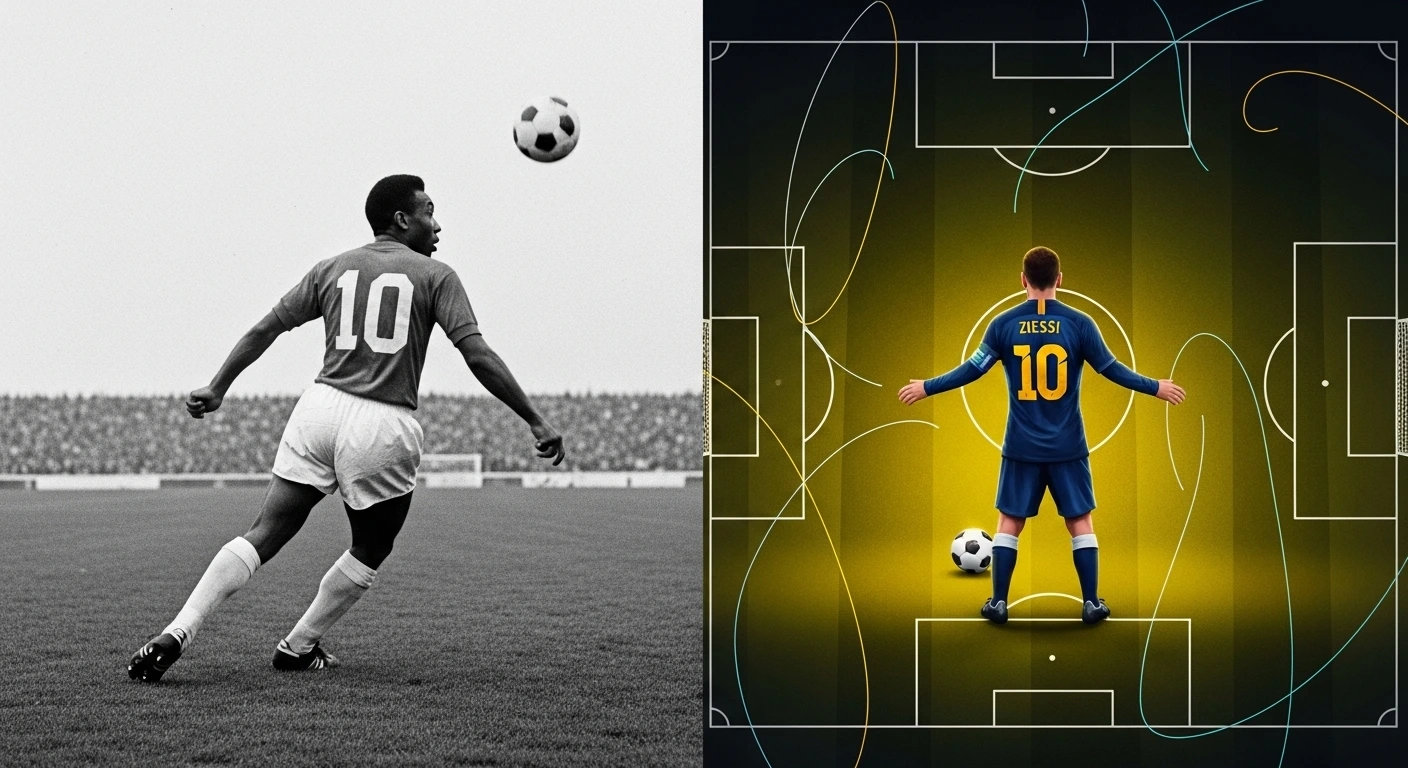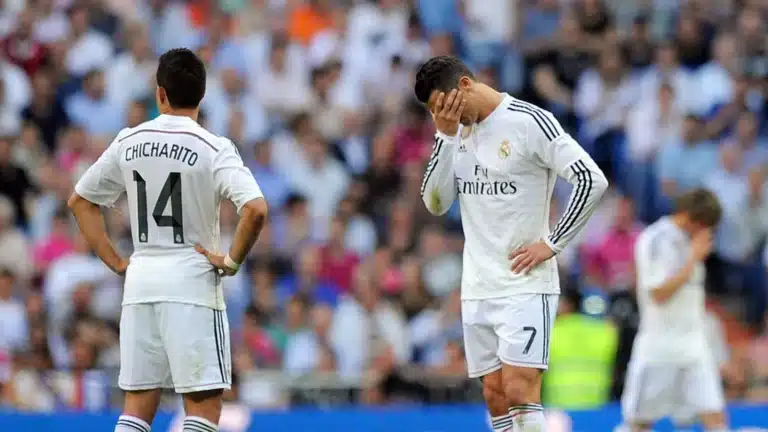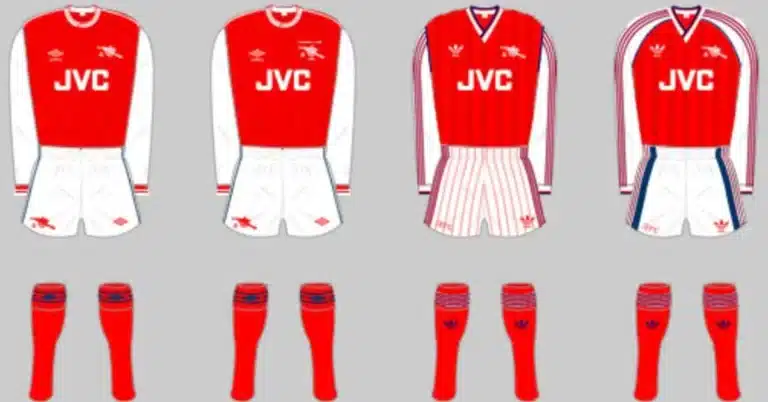The Evolution of the Number 10 Role in Football History
The number 10 is the shirt of legends. Think of the moments: Pelé’s genius, Maradona’s defiance, Zidane’s control. This jersey isn’t just a number; it’s a sacred mantle reserved for the team’s commander, the player capable of unlocking the tightest defenses.
But the job description for this iconic Number 10 Role has changed dramatically. It has evolved from the free-roaming Trequartista of the 60s to the modern, tactically disciplined engine of today.
Welcome to Football History and Legends. We’re taking a deep dive into how football’s greatest position transformed to survive the modern game.
The Classic Number 10 Role: The Golden Age of Playmakers
To understand the evolution of the Number 10 Role, we have to go back to its golden age. The classic number 10, often referred to as the playmaker, was the absolute heart of the team’s attack.
In my experience studying vintage football tactics, the classic 10 was afforded a level of freedom we rarely see today. Their primary responsibility was creating goals, and their secondary responsibility was… also creating goals. They served as the crucial bridge between the midfield and the attack.
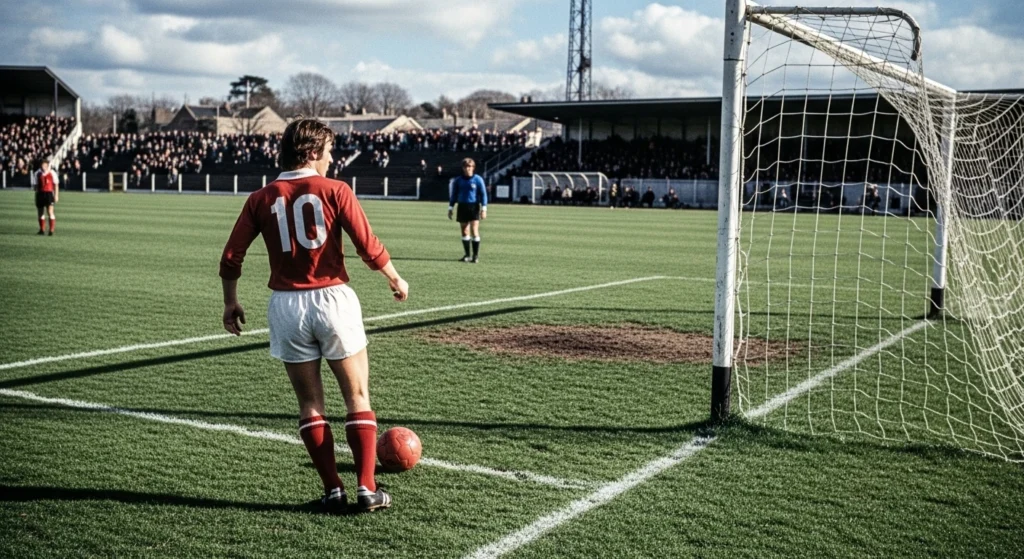
The Trequartista and Enganche
The role has always been defined by flair, but geographically, the terms varied across the world:
Trequartista (Italy): Literally meaning “three-quarters,” this player operates in the final third, just shy of the striker. They are the ultimate ball-handlers, often specializing in killer through-balls and long-range shooting.
Enganche (South America): Translates to “the hook” or “the coupling.” This emphasizes the player’s role in linking the team together. They are the fulcrum, the point where all attacking moves begin and flow through.
The great Pelé and Diego Maradona perfectly embodied this classic, free-roaming style. They were the unchallenged focal points of their teams. Here’s a pro tip: If you want to understand the tactical genius of the classic era, study how these players controlled the tempo of the entire game from a single, dominant position.
Tactical Shifts: Why the Number 10 Role Evolved
As magical as the classic 10 was, the football world kept turning. The increasing physicality and tactical discipline of the game meant the role had to adapt—or face extinction. The traditional Number 10 Role started to fade around the turn of the millennium.
This shift was mainly due to one major tactical innovation: the rise of the organized press and the double pivot midfield. Systems like the 4-2-3-1 and 4-3-3 put the traditional 10—a luxury player who didn’t track back—under immense pressure.
Here’s what changed the game:
- Increased Defensive Burden: Modern football demands that all 11 players contribute defensively. The space the classic 10 dominated was now aggressively patrolled by two defensive midfielders (the double pivot).
- Speed and Stamina: The modern game prioritizes high-intensity running and pressing. A player with exceptional technical skill but low stamina could no longer hold the position without becoming a defensive liability.
- The Narrow Field: Teams became incredibly compact defensively, eliminating the vital pockets of space that the free-roaming Attacking Midfielder thrived in.
This tactical evolution meant the role had to change or disappear entirely. The player who once stood alone behind the striker had to either drop deeper into midfield or push higher to effectively become a striker. For a deeper look at team formations, check out: A Tactical Guide to Football Formations and Their History.
The Modern Number 10 Role: From Deep-Lying Playmakers to False Nines
The demands of modern football forced this change, but creativity always finds a way. Instead of dying, the playmaker simply decentralized their genius, leading to two crucial modern interpretations of the number 10.
The responsibility of linking defense to attack is now often shared by multiple players across the pitch. This created two dominant modern archetypes that took over the creative duties.
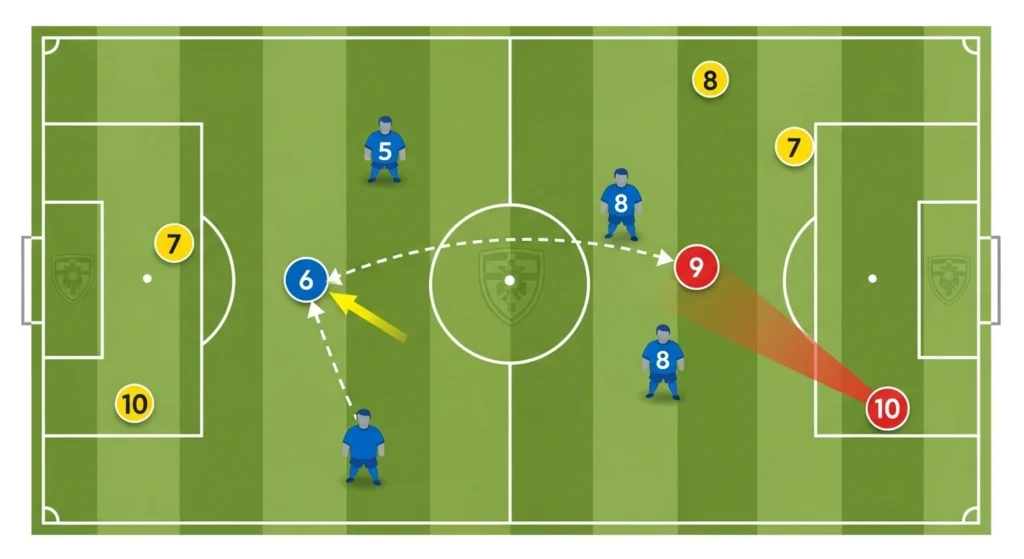
The Deep-Lying Playmaker (DLP)
This modern concept relocates the “10” from the congested attack zone to a deeper midfield position, often wearing the number 6 or 8.
- What I’ve found works best for team construction is having a DLP who possesses the vision of a classic 10 but the discipline and tackling ability of a holding midfielder.
- Players like Andrea Pirlo and Xabi Alonso mastered this role, controlling the game through long-range passing. They dictated the tempo from deep areas, taking advantage of the space the congested Trequartista zone no longer allowed.
The False Nine Phenomenon
The other major evolution is the False Nine, popularized by teams like Pep Guardiola’s Barcelona. This player, usually a striker or forward wearing the number 9, is given the creative freedom of the old 10.
- The Tactic: The False Nine drops deep into the midfield space between the lines. This movement pulls the opposition’s center-backs out of their defensive line, creating huge gaps for wingers or central midfielders to run into.
- Data Point: When Lionel Messi played as a False Nine for Barcelona, his goal-to-assist ratio skyrocketed. This demonstrates the power of occupying the classic Attacking Midfielder zone while being listed as a striker.
The modern game values utility and adaptability above all else. Today’s best playmakers, like Kevin De Bruyne, can shift between a wide attacker, a central 8, or a traditional 10 mid-game, proving that the magic of the number 10 survives through pure versatility.
The GOATs Who Defined the Number 10 Role
The history of the sport is written in the legends who wore the number 10. They didn’t just play; they defined eras and tactical concepts.
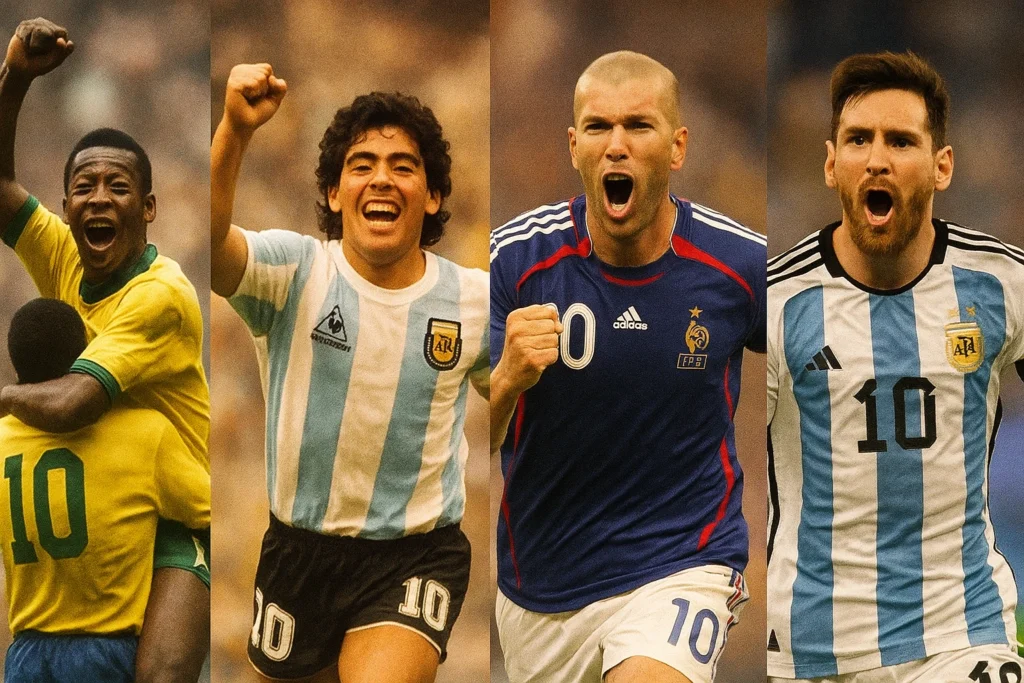
Pelé (The Original Icon)
The ultimate classical 10, combining goal-scoring prowess with unparalleled vision. He showed the world the true potential of the role.
Diego Maradona (The Enganche)
Perhaps the purest expression of the role, a creative genius who could win a match single-handedly through dribbling and passing from the central attacking zone.
Zinedine Zidane (The Transitional Master)
A powerful Playmaker who bridged the gap between the classic and modern eras. He was physically strong enough to survive the new demands while retaining the elegance of the original 10.
Lionel Messi (The Modern Pioneer)
Primarily a False Nine, he demonstrated that the most effective way to play the Number 10 Role in the modern age is to disrupt the defensive structure by starting higher and dropping deep.
For more insight into the history of legendary players, we recommend checking out the FIFA Museum’s archives for credible sources and rich documentation.
Frequently Asked Questions About the Number 10 Role
Q1: What is the difference between a Number 10 and a Central Midfielder?
A traditional Number 10 is an attacking midfielder whose primary function is creating scoring chances, typically operating higher up the field. A Central Midfielder (like a number 6 or 8) has more balanced duties, including defense, ball retention, and building play from deeper positions. The modern game often blurs these lines, with the “8” often taking on the creative duties of the “10.”
Q2: Is the classic Number 10 role dead in modern football?
The free-roaming, defensively uninvolved classic Number 10 is largely extinct in top-level football. However, the function of the 10—central creativity—is very much alive. It has simply been redistributed to deep-lying playmakers, wingers, and False Nines, allowing the team to maintain defensive shape while attacking.
Q3: What is the Trequartista position?
Trequartista is the Italian term for the attacking midfielder who plays in the final third (three-quarters) of the pitch. They are technically gifted players focused entirely on the final pass, a shot on goal, or a tricky dribble to break the defensive line. They are the epitome of the classic, pure Playmaker.
Conclusion: The Enduring Magic of the Playmaker
The Evolution of the Number 10 Role in Football History isn’t a story of decline; it’s a testament to adaptation and genius. The magic that defines the position—vision, creativity, and the ability to win a match with a single pass—will never truly die. It simply found new homes on the pitch, often deeper or higher than before.
Whether you call them a Trequartista, Enganche, or a Deep-Lying Playmaker, the Number 10 remains football’s great artist.
What do you think? Who is the most effective modern Number 10 in today’s game? Drop a comment below and let us know your favorite Playmaker from any era!

